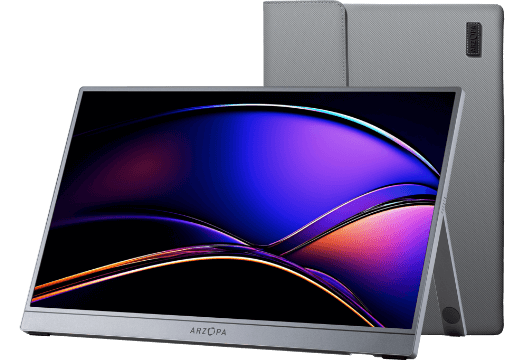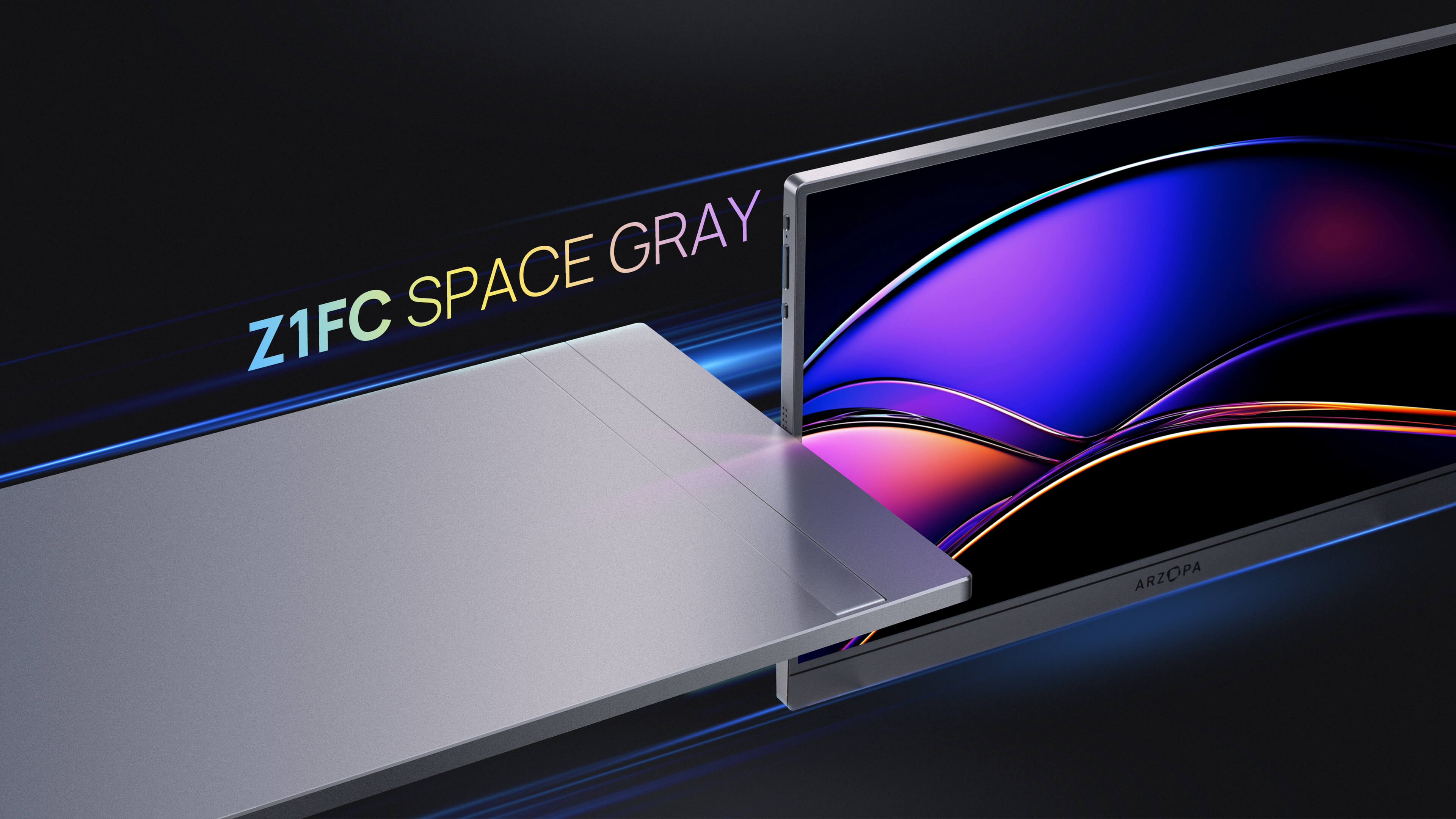In the world of gaming and multimedia, smooth and seamless visuals are essential for an immersive experience. Enter variable refresh rate technologies like FreeSync and G-Sync, which have become increasingly important in recent years. These technologies synchronize the monitor's refresh rate with the graphics card's frame rate output, eliminating screen tearing and stuttering for a smoother, more responsive experience, especially during fast-paced gaming.
What are FreeSync and G-Sync?
FreeSync and G-Sync work on a similar principle: they dynamically adjust the monitor's refresh rate to match the frame rate being produced by the GPU. However, there are some key differences between the two technologies:
- Technology: FreeSync is an open standard that works over DisplayPort and HDMI, while G-Sync is proprietary and only works over DisplayPort.
- Cost: FreeSync monitors are generally more affordable since they don't require a proprietary chip, while G-Sync monitors command a premium price.
- Compatibility: FreeSync has a wider range of supported GPUs, working with both AMD and some Nvidia cards, while G-Sync only works with Nvidia GPUs.
Both technologies have their advantages, and the choice often comes down to budget, GPU compatibility, and personal preference. For most users, the difference in real-world performance is minimal.
In-Depth Comparison
Here's a comparison table in markdown format highlighting the key differences between FreeSync and G-Sync:
| Feature | FreeSync | G-Sync |
|---|---|---|
| Technology | Open standard (AMD) | Proprietary (NVIDIA) |
| Compatibility | AMD graphics cards, some NVIDIA GPUs | NVIDIA graphics cards |
| Cost | Budget-friendly ($200-$500) | More expensive ($300-$1,500+) |
| Performance | Similar to G-Sync | Slightly smoother gaming experience |
| Monitor Requirements | 60Hz+ refresh rate | 120Hz+ refresh rate |
| Input Support | DisplayPort, HDMI, DVI, VGA | DisplayPort, HDMI |
| Effective Refresh Rate Range | 9Hz - 240Hz (varies by model) | 30Hz - 144Hz |
| Tear-Free Gaming | Yes | Yes |
| Visual Quality | Good | Slightly better |
| Low Framerate Compensation | Limited | Guaranteed down to 1Hz |
| Additional Features | - | Variable Overdrive, ULMB |
This table summarizes the key differences in technology, compatibility, cost, performance, monitor requirements, input support, effective refresh rate range, tear-free gaming capabilities, visual quality, low framerate compensation, and additional features offered by each technology.
Technology Foundations
- FreeSync is based on the Adaptive-Sync open standard in DisplayPort 1.2a and later versions. It relies on the integrated display controller inside the GPU to handle the coordination between the graphics card and monitor.
- G-Sync uses a proprietary NVIDIA-manufactured scaler chip that gets embedded into the control board of the display panel. This module handles the coordination between the NVIDIA graphics card and monitor.
The key differences are:
- FreeSync is an open standard that any manufacturer can implement for free, while G-Sync is proprietary NVIDIA technology that requires a licensing fee and dedicated scaler chip.
- G-Sync monitors typically cost $100-200 more than similar FreeSync monitors due to the additional hardware and licensing costs.
- FreeSync monitors offer more flexibility in terms of supported inputs like DVI, VGA, HDMI, and DisplayPort, while G-Sync is limited to just DisplayPort and HDMI.
Effective Refresh Rate Range
G-Sync is capable of a refresh rate range from 30Hz to 144Hz, while the FreeSync spec supports 9Hz to 240Hz. However, the actual supported range varies by monitor model. FreeSync monitors can have a narrow range like 48-75Hz, while G-Sync monitors guarantee a wide range and low framerate compensation (LFC) to double the frame rate below the lower end of the range.Tear-Free Gaming
Both technologies effectively eliminate screen tearing by synchronizing the monitor's refresh rate to the GPU's frame rate. When the frame rate falls within the monitor's variable refresh rate range, G-Sync and FreeSync keep the images in perfect sync, removing tearing and minimizing input lag.

Subjective Visual Quality
In blind tests, G-Sync has been found to have a slight edge over FreeSync in terms of visual quality and smoothness when all other monitor parameters are equal. However, the difference is subjective and depends on the specific monitor models being compared. Other factors like HDR quality, motion blur reduction, and input lag can also impact the perceived gaming experience, independent of the adaptive sync technology.

Image Credit: kanchai website
Compatibility and Ecosystem
- AMD GPUs and FreeSync Monitors: AMD GPUs support the open VESA Adaptive Sync standard, which is the basis for FreeSync monitors. Most FreeSync monitors will work with AMD GPUs out of the box to enable variable refresh rate (VRR) and tear-free gaming.
- NVIDIA GPUs and G-Sync Monitors: NVIDIA's G-Sync Compatible is based on the VESA Adaptive Sync standard and works similarly to FreeSync. A large majority of FreeSync and G-Sync Compatible monitors will work with both AMD and NVIDIA GPUs, often cross-compatibly. However, the more premium G-Sync and G-Sync Ultimate monitors use proprietary NVIDIA hardware and only support VRR with NVIDIA GPUs.

Image Credit: Kitguru website
Performance
Input lag, refresh rate, and frame synchronization are very similar between FreeSync and G-Sync monitors when using the same panel and running at the same frame rate. Most users cannot perceive any visual difference in a blind test when all other parameters are equal.
However, achieving parity in monitor quality and performance is not guaranteed. Some FreeSync monitors may have higher input lag or less effective frame synchronization compared to G-Sync. G-Sync monitors are also more likely to have higher refresh rates like 240Hz.
For professional applications like video editing and animation, the benefits of FreeSync and G-Sync are less pronounced. The frame rate stability is still useful, but the lack of tearing is not as critical compared to gaming.
Cost Analysis
G-Sync monitors typically cost $100-200 more than equivalent FreeSync models due to the proprietary hardware module required. However, most users won't notice a difference in real-world gaming performance between the two.
FreeSync is an open standard that is now supported by both AMD and NVIDIA GPUs, while G-Sync is proprietary to NVIDIA. This means FreeSync monitors have wider compatibility and are more affordable long-term, as you aren't locked into a specific GPU brand.
In summary, the premium price for G-Sync is generally not worth it for most users. FreeSync monitors provide nearly identical variable refresh rate performance at a lower cost. The money saved on the monitor can be better spent on a faster GPU for higher in-game framerates.
User Experiences
Both FreeSync and G-Sync provide a smooth, tear-free gaming experience when used within their supported refresh ranges. However, some common issues that can arise include:
- Monitors not being certified for G-Sync Compatible mode, leading to compatibility problems.
- Adaptive sync dropping out at very low frame rates below 40Hz.
- Choosing between adaptive sync and motion blur reduction, which are mutually exclusive on some monitors.
To solve these issues, users should check if their FreeSync monitor is G-Sync Compatible certified before attempting to use G-Sync, disable adaptive sync and use motion blur reduction at very high frame rates over 80fps, and experiment with both adaptive sync and motion blur reduction to see which provides the best experience for each game.
Future of Display Technologies
Variable refresh rate (VRR) technologies like AMD FreeSync and NVIDIA G-Sync are expected to continue advancing in the coming years. As display resolutions and frame rates increase, VRR will become increasingly important for providing smooth, tear-free gaming experiences.
Some key upcoming advancements in VRR include:
- Higher refresh rates: Displays with 240Hz, 360Hz, and even 480Hz VRR are on the horizon, enabling buttery smooth motion.
- Lower latency: Enhancements to VRR will reduce input lag, making games feel more responsive.
- Wider compatibility: VRR support is expanding to more display types like OLED and microLED, and becoming a standard feature in TVs and monitors.
AMD and NVIDIA are both actively developing their VRR technologies, with AMD working on FreeSync Premium and FreeSync Premium Pro (adding HDR support and higher refresh rates), and NVIDIA expanding G-Sync to work with more display types and enable features like variable overdrive.
Both companies are also exploring advanced display technologies like microLED and holography that could enable new VRR capabilities in the future.
Conclusion
In the battle between FreeSync and G-Sync, there is no clear winner – both technologies offer an enhanced gaming experience by eliminating screen tearing and stuttering. However, FreeSync emerges as the more affordable and widely compatible option, making it the ideal choice for most users.
For those seeking the ultimate in smooth gaming performance and are willing to invest in high-end hardware, G-Sync's proprietary technology may provide a slight edge in terms of visual quality and consistency. However, the majority of gamers will find FreeSync to be an excellent value proposition, delivering a nearly indistinguishable experience at a lower cost.
Ultimately, the choice between FreeSync and G-Sync will depend on your budget, GPU compatibility, and personal preferences. Regardless of which technology you choose, you can rest assured that both will elevate your gaming experience to new heights.
FAQ
Does using FreeSync with NVIDIA GPUs limit performance?
Using FreeSync with NVIDIA GPUs does not limit performance, but it may cause some issues:
- FreeSync is an AMD technology, so NVIDIA GPUs are not officially supported. NVIDIA GPUs can use FreeSync, but it's not guaranteed to work properly.
- Enabling FreeSync on an NVIDIA GPU may cause screen flickering, black screens, or other visual artifacts in some cases.
- Performance should not be affected much, but you may see a slight decrease in FPS when using FreeSync with an NVIDIA GPU compared to using it with an AMD GPU.
- For the best experience, it's recommended to use G-Sync if you have an NVIDIA GPU, or FreeSync if you have an AMD GPU. Using the officially supported adaptive sync technology will provide the most stable and optimal performance.
Can G-Sync monitors work with AMD GPUs?
No, G-Sync monitors cannot work with AMD GPUs. G-Sync is Nvidia's proprietary variable refresh rate technology that requires specific Nvidia hardware in the monitor and GPU to function. AMD GPUs are not supported by G-Sync monitors. For AMD GPUs, you would need to use a FreeSync monitor, which is AMD's open standard alternative to G-Sync.


























